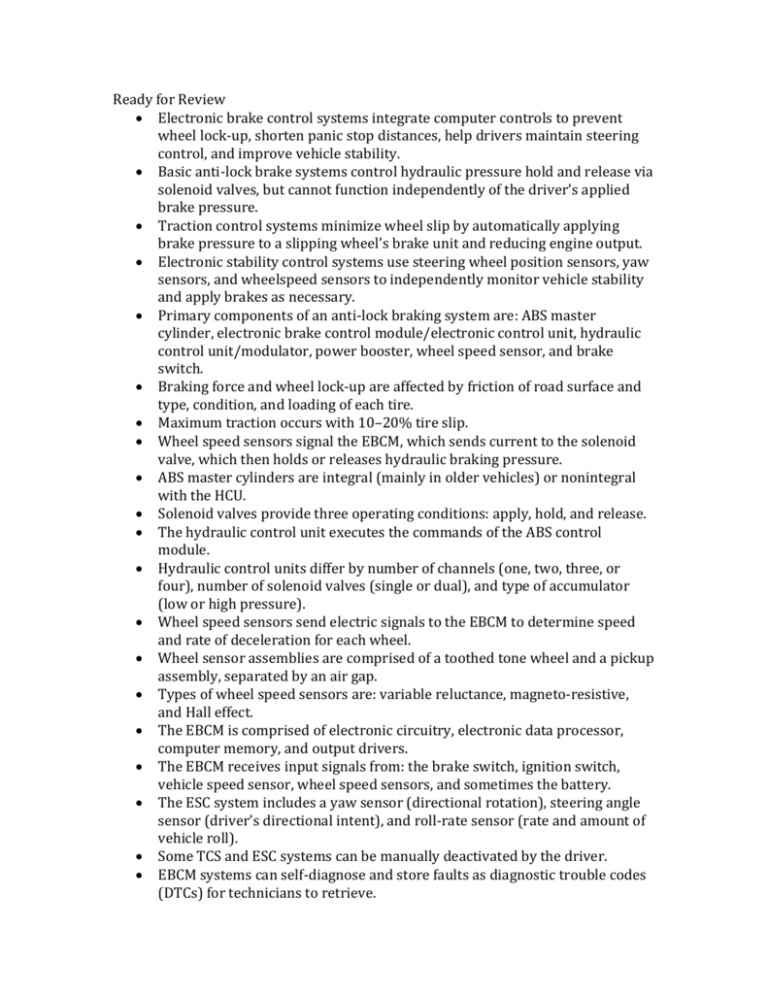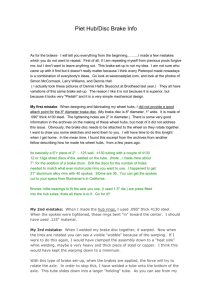Chapter 6. Electronic Brake Control
advertisement

Ready for Review Electronic brake control systems integrate computer controls to prevent wheel lock-up, shorten panic stop distances, help drivers maintain steering control, and improve vehicle stability. Basic anti-lock brake systems control hydraulic pressure hold and release via solenoid valves, but cannot function independently of the driver’s applied brake pressure. Traction control systems minimize wheel slip by automatically applying brake pressure to a slipping wheel’s brake unit and reducing engine output. Electronic stability control systems use steering wheel position sensors, yaw sensors, and wheelspeed sensors to independently monitor vehicle stability and apply brakes as necessary. Primary components of an anti-lock braking system are: ABS master cylinder, electronic brake control module/electronic control unit, hydraulic control unit/modulator, power booster, wheel speed sensor, and brake switch. Braking force and wheel lock-up are affected by friction of road surface and type, condition, and loading of each tire. Maximum traction occurs with 10–20% tire slip. Wheel speed sensors signal the EBCM, which sends current to the solenoid valve, which then holds or releases hydraulic braking pressure. ABS master cylinders are integral (mainly in older vehicles) or nonintegral with the HCU. Solenoid valves provide three operating conditions: apply, hold, and release. The hydraulic control unit executes the commands of the ABS control module. Hydraulic control units differ by number of channels (one, two, three, or four), number of solenoid valves (single or dual), and type of accumulator (low or high pressure). Wheel speed sensors send electric signals to the EBCM to determine speed and rate of deceleration for each wheel. Wheel sensor assemblies are comprised of a toothed tone wheel and a pickup assembly, separated by an air gap. Types of wheel speed sensors are: variable reluctance, magneto-resistive, and Hall effect. The EBCM is comprised of electronic circuitry, electronic data processor, computer memory, and output drivers. The EBCM receives input signals from: the brake switch, ignition switch, vehicle speed sensor, wheel speed sensors, and sometimes the battery. The ESC system includes a yaw sensor (directional rotation), steering angle sensor (driver’s directional intent), and roll-rate sensor (rate and amount of vehicle roll). Some TCS and ESC systems can be manually deactivated by the driver. EBCM systems can self-diagnose and store faults as diagnostic trouble codes (DTCs) for technicians to retrieve.











